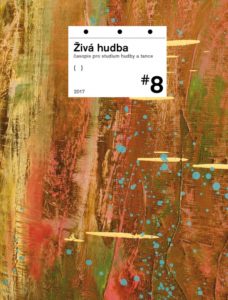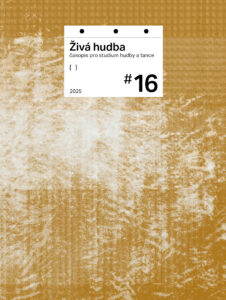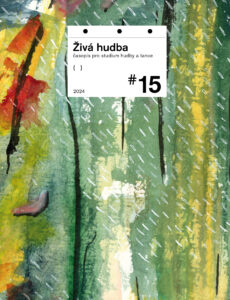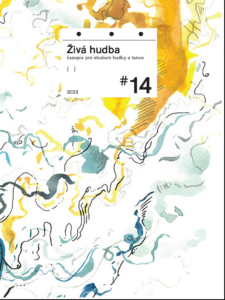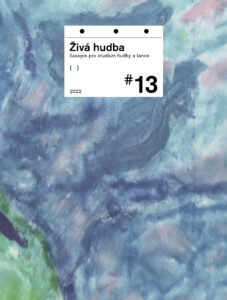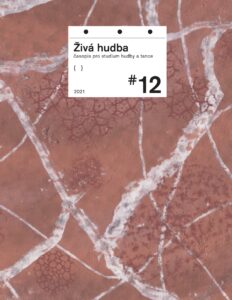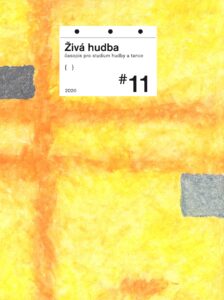Abstrakt The vozembouch is a folk instrument that has evolved through centuries of dialectical interactions with Slavic (and Germanic) cultures. The instrument has developed from a percussive bowed singlestring fiddle to being primarily a percussion instrument, often constructed without strings, and it has shifted back and forth over time between being a prominently used or allbutextinct instrument in Czech culture. Vozembouchy (pl.) have evolved from medieval pagan ritual enhancers to minstrel instruments to percussion reminding some Slavic people of their heritage in troubled times, and has been part of a folk music revival that has resulted in renewed interest in traditional performance on the instrument, as well as new, modern musical directions embraced by players spanning many generations. Today, it is only manufactured on a small scale because many Czech players place a high value on vozembouchy being built by the person performing on it. As a result, the instruments are almost entirely unique, incorporating materials at hand and personal playing styles to inform construction decisions. Alongside this individuality, however, some staple elements have been maintained, which contribute to the instrument’s almost ubiquitous familiarity among Czech people. One of the elements is the use of anthropomorphic/zoomorphic heads to adorn the top of the instrument. Often, these heads will evoke characters from folk tales, most commonly a devil head or čertí hlava. In this paper, I draw from literary sources and my fieldwork with vozembouch makers and players to discuss the ways in which dialectical engagement of the vozembouch with Slavic culture has shaped the evolution of its construction, and suggest how a detailed study of the making of this instrument can highlight the development of the vozembouch’s cultural value that has made it an iconic Czech folk music instrument.


William Connor:
Constructing the Sound of Devils: Dialectical Interactions between Culture, History, and the Construction of the Czech Vozembouch
Stati a studie / Živá hudba 2017/8 / Publikováno 18. 4. 2018
Abstrakt:
The vozembouch is a folk instrument that has evolved through centuries of dialectical interactions with Slavic (and Germanic) cultures. The instrument has developed from a percussive bowed singlestring fiddle to being primarily a percussion instrument, often constructed without strings, and it has shifted back and forth over time between being a prominently used or allbutextinct instrument in Czech culture. Vozembouchy (pl.) have evolved from medieval pagan ritual enhancers to minstrel instruments to percussion reminding some Slavic people of their heritage in troubled times, and has been part of a folk music revival that has resulted in renewed interest in traditional performance on the instrument, as well as new, modern musical directions embraced by players spanning many generations. Today, it is only manufactured on a small scale because many Czech players place a high value on vozembouchy being built by the person performing on it. As a result, the instruments are almost entirely unique, incorporating materials at hand and personal
playing styles to inform construction decisions. Alongside this individuality, however, some staple elements have been maintained, which contribute to the instrument’s almost ubiquitous familiarity among Czech people. One of the elements is the use of anthropomorphic/zoomorphic heads to adorn the top of the instrument. Often, these heads will evoke characters from folk tales, most commonly a devil head or čertí hlava. In this paper, I draw from literary sources and my fieldwork with vozembouch makers and players to discuss the ways in which dialectical engagement of the vozembouch with Slavic culture has shaped the evolution of its construction, and suggest how a detailed study of the making of this instrument can highlight the development of the vozembouch’s cultural value that has made it an iconic Czech folk music instrument.
Citace:
William Connor. Constructing the Sound of Devils: Dialectical Interactions between Culture, History, and the Construction of the Czech Vozembouch. Živá hudba 2017/8. On-line <https://ziva-hudba.info/constructing-the-sound-of-devils-dialectical-interactions-between-culture-history-and-the-construction-of-the-czech-vozembouch-2/> [03. 1. 2026].
Kopírovat
Vyšlo v časopise
Živá hudba 2017/8
Rubrika: Stati a studie
Publikováno: 18. 4. 2018
PDF: download
Klíčová slova:
cultural entanglement, etno, folkartisan dichotomy, functional evolution, instrument construction, Interpretace, sonic/visual performativity, vozembouch
Články autora:
William Connor (1)
Aktuální čísla časopisu můžete koupit v Nakladatelství AMU.
Citace:
William Connor. Constructing the Sound of Devils: Dialectical Interactions between Culture, History, and the Construction of the Czech Vozembouch. Živá hudba 2017/8. On-line <https://ziva-hudba.info/constructing-the-sound-of-devils-dialectical-interactions-between-culture-history-and-the-construction-of-the-czech-vozembouch-2/> [03. 1. 2026].
Kopírovat
Další články
-
Petr Pařízek:
Možnosti aplikace matematických znalostí v kontextu praktického provozování hudby
Stati a studie | 2020/11 -
Alexandra Švehlová:
Klavírna tvorba Arthura Vincenta Louriého do roku 1922
Stati a studie | 2018/9 -
Jana Černohouzová, Lucie Soutorová Valčová, Sylva Stejskalová:
Výzkum vztahu interpret (komorní soubor) – skladatel – hudební režisér
Materiály | 2019/10 -
Jaromír Havlík:
Jiří Hlaváč: Josef Suk – pokus o portrét
Recenze | 2018/9 -
Tara Browner:
Historic Flute Traditions of Native North America in Transition: 1890 to the Present
Stati a studie | 2017/8 -
Iva Oplištilová:
Martin Iddon: New Music at Darmstadt: Nono, Stockhausen, Cage, and Boulez
Recenze | 2018/9 -
Matěj Kratochvíl:
Světová konference International Council for Traditional Music
Festivaly a konference | 2019/10 -
Dorota Gremlicová:
Symposium Etnochoreologické studijní skupiny v Szegedu 2018
Festivaly a konference | 2018/9

